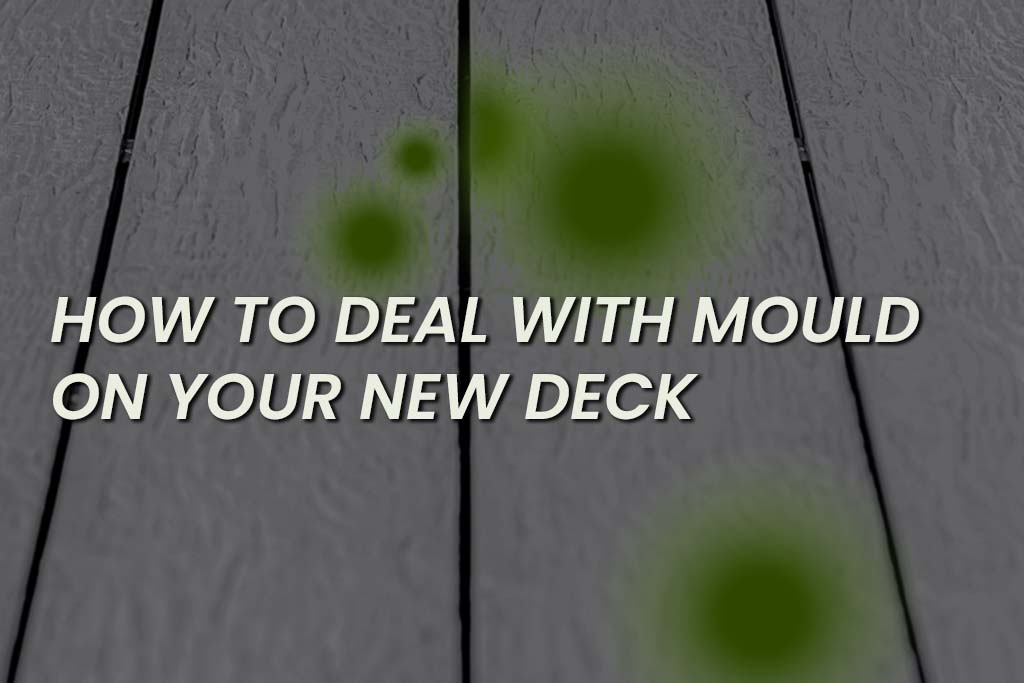When it rains in Australia, it often pours. What’s thought of as a sunny country can suddenly become a scene of heavy rains, cyclone winds and flooding, as Queensland, New South Wales and Victoria experienced earlier this year. As a result of these unusually damp, humid conditions, there has been influx of mould, with people finding it in various places all around their home. Unfortunately, during extreme rainfall and flooding, your deck isn’t immune to some unexpected mould.
Luckily, there are steps you can take to help avoid mould or remove any that you discover. To help, we’re going to look at what causes mould to grow, how you can try preventing it, and steps you can take to return your deck to its prime.
What causes mould to grow on decks?
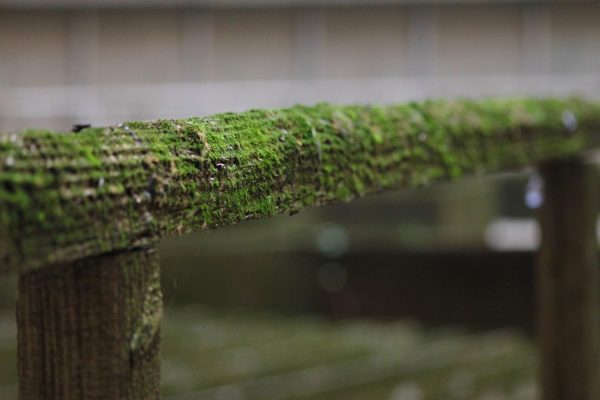
Part of what makes mould so frustrating is how easily it can grow, not to mention how quickly. Mould thrives on damp conditions and can find a way to grow almost anywhere with a bit of moisture. During severe weather and rainfall, mould will start growing in unexpected places because everywhere now contains the moisture needed to create a perfect breeding ground. Unfortunately, areas like Queensland and New South Wales have provided nothing but these conditions over the last summer, hence why you’re probably seeing more mould than ever.
Does mould grow on all types of decking?
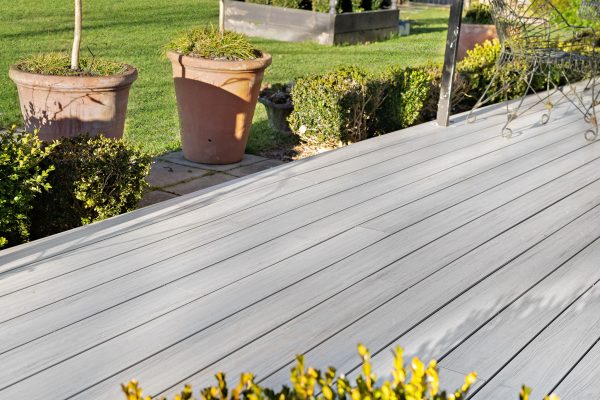
Mould can grow on most types of decking; however, it is a more prevalent and serious issue in some materials than others.
Timber boards are particularly susceptible to mould due to its vulnerability to moisture damage. Worse still, spores can easily penetrate the core of timber boards, making it impossible to remove completely. In the majority of cases, mould will compromise the structural integrity of timber decking due to the mould being able to grow deep into the material. This can lead to rotting and you deck’s reliability and strength becoming compromised.
The advantage of ASA composite decking boards is that most of the time, mould won’t grow on them. However, just like extreme weather can flood areas that are usually safe from high waters, it can also exponentially increase the likelihood of mould growing everywhere.
The good news is the with regular cleaning and deck maintenance, mould will remain a surface level issue which means spores won’t reach into the core of your ASA composite board. Even when mould does grow on composite boards, in the vast majority of cases it’ll be only a surface. While it is possible to include mould killing chemicals within a decking board, these can be harmful to pets, children, and the environment, which is why we choose not to use them in our decking.
The most common types of mould you might see growing around your deck include:
- Black Mould
Black Mould is the most common type of mould you’ll find. Though called black mould, it may also be a dark green or other colours, especially during early stages. Not only is it unsightly, but it can also cause serious health issues if left unchecked. Black mould is older mould, and unfortunately, is often harder to remove from certain surfaces.
- White Mould
Not as well-known as black mould but still a concern. Unfortunately, white mould thrives on wood and moisture. The most common early sign is any discolouration that looks like white spots or blotches.
Where to check for mould
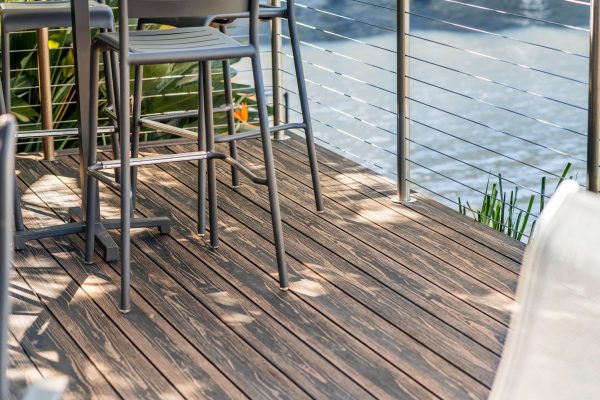
Whether you’re checking your deck for mould or any other type of damage, it’s important to look beyond the top surface. One of the most common mistakes we find people make is not being thorough in their check, meaning they’re suddenly caught off guard by a severe mould problem. Remember to look under your deck and in every corner, as this could help you to avoid any nasty surprises down the line.
Like most problems, the sooner you catch mould, the easier it’ll be to solve and the more damage you can prevent. Therefore, it’s worth conducting regular checks of your deck. When there’s been heavy rain in your area, keep a close eye on your deck for the next few weeks or so.
How to get rid of mould
Whatever technique you use to rid your deck of mould, we recommend taking a cautious approach. You can always up the ante if needed, but it’s much harder to reverse damage. Whenever in doubt, talk to the manufacture or a professional about what they would recommend
Some of the best ways to remove mould from your deck include:
Pressure Washer
While the theory behind using a pressure washer seems straightforward, there is an art to it if you want to avoid causing damage. Judging your distance from the surface you’re spraying as well as your hose pressure are crucial for a successful pressure clean. Some tips we’d recommend:
- Use a fan tip that creates a gentle, even flow for your decking. A narrow tip may harm your decking as it will be too focused and intense and is better suited to concrete surfaces.
- Be careful with your aim: A pressure washer can be dangerous if used incorrectly. Never aim it at another person or pet or spray a surface or material you aren’t sure can handle it.
- If you’re unsure, it may be worth hiring a professional, because if you accidentally damage your deck, it’ll negate any money you saved doing the job yourself.
Eco-friendly options
Natural solutions not only are great for the environment, but they’re much less likely to damage your deck. They can be a great first step when trying to rid your deck of mould. Some solutions you can try are:
- Mix 3% (or about two teaspoons) of Tea Tree Oil into a spray bottle with two cups of water.
- White fermented vinegar can be great for killing surface mould. Once applied, leave for twenty minutes before wiping clean lightly with a damp sponge. Dry area afterwards.
- Mix 1/4 teaspoon of clove oil into 250 millilitres of baby oil and shake.
As we’ve mentioned, mould is very resistant, so you may have to repeat the above techniques a few times to complete the job.
Consider a professional cleaner
While it’ll cost a little extra, it may be worth looking into hiring a professional cleaner to clean your deck. They’ll have a wealth of experience and products to draw on and will provide you peace of mind as well as save you time. Ask your professional cleaner if they have experience of removing mould from decks. If you have time, it might be worth investigating a few options, so you can find the perfect cleaner for you.
What NOT to do for mould removal

We strongly advise that you DON’T use bleach to remove mould from your decking. Not only could it severely tarnish and damage your decking, the high PH content makes bleach an ineffective mould killer. Most likely, it’ll just bleach the mould, so the mould may look like it’s gone when it’s still there and running amok.
Dry brushing an area with mould can also be counterproductive as you may be spreading the spores and making your problem worse!
What happens if you leave the mould to keep growing?
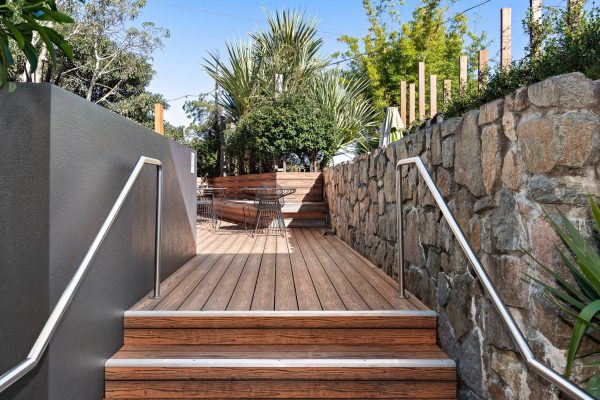
Letting mould grow can lead to a variety of issues, including:
- It will only get worse: Left untreated, mould will simply continue to grow, expanding not just on the surface of your deck, but growing deep in the material itself. The more you allow mould to establish itself, the harder it’ll be to remove it.
- Health issues: Mould isn’t just an eyesore; it can be a health hazard for you and your loved ones. Inhaling the spores can cause respiratory problems in both humans and pets. This is especially an issue for young children, the elderly and anyone with a pre-existing health issue like asthma.
What to check when building your new deck
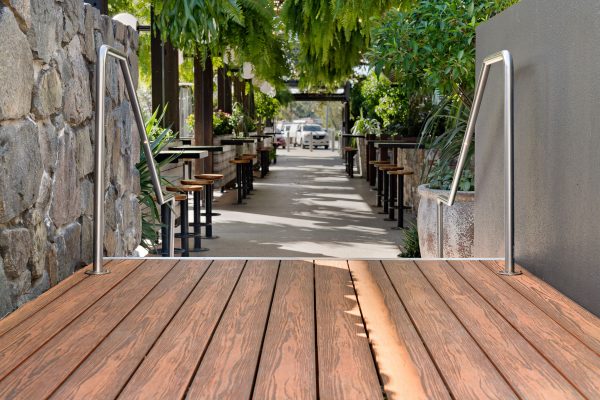
One of the key steps you can take to avoid mould is careful planning and good design during the building stage. Like with most problems, preventing mould is easier than getting rid of it. Here are a few factors to keep in mind both when building your deck and when trying to diagnose why mould is occurring on your completed deck:
Ground Clearance
It’s vital to always check below your deck and see that there is adequate clearance between the deck and the soil. As we’ve said, mould thrives on damp and having your deck too close to the ground can increase the chances of moisture in your boards or framework. To avoid any damp from the soil affecting your deck’s lifespan, we recommend a clearance of around 20cm to 30 cm.
If you’re in an area prone to water stagnation, we recommend you apply a moisture protection barrier. Talk to your builder about this and they’ll be able to give you their expert advice on the matter.
Water Barrier when Installing on Concrete
Decks installed on concrete are much lower due to the height and width of the battens. Some concrete areas can be prone to water stagnation and submersion, both bad news when trying to avoid mould. If your concrete area has an history of these types of issues, consider installing a moisture protection barrier. A qualified builder (especially one who specialises in decks) will be able to help you with this.
Drainage
If water is the key to mould growing, it only makes sense that good drainage is a must to keep your deck in great condition. It’s extremely important to have drainage that can handle water flow and heavy rain, including having a slope/gradient on the ground beneath your deck to ensure water runs off.
How to prevent further mould growth
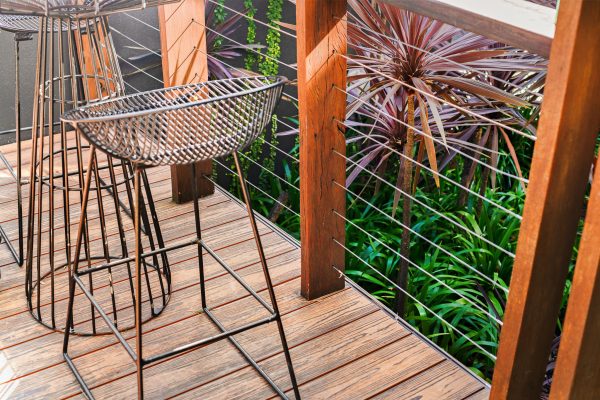
Keep the deck dry
Moisture is the key element that will lead to mould. Removing as much water as possible will minimise the odds of mould growing.
Remove debris
Natural debris, such as leaves, twigs, and dirt, can attract moisture or even act as a vessel for mould spores. Sweeping your deck clear regularly is a quick, easy way to cut down on your deck’s chances of developing mould.
Be vigilant
While you don’t have to watch your deck 24/7, being aware of potential hazards and conditions that could lead to mould means you’re more likely to catch the problem before it gets out of hand. You’ll want to be particularly vigilant during the wet months and the weeks after the wet season as these are when your deck is most at risk.
Mould is not a common problem with well designed composite decking, but it can happen. With a little care and know-how, it is a treatable problem that won’t permanently hurt your new deck. If you purchased decking boards from Brite Decking that are growing mould- reach out to the team for more help or info.
